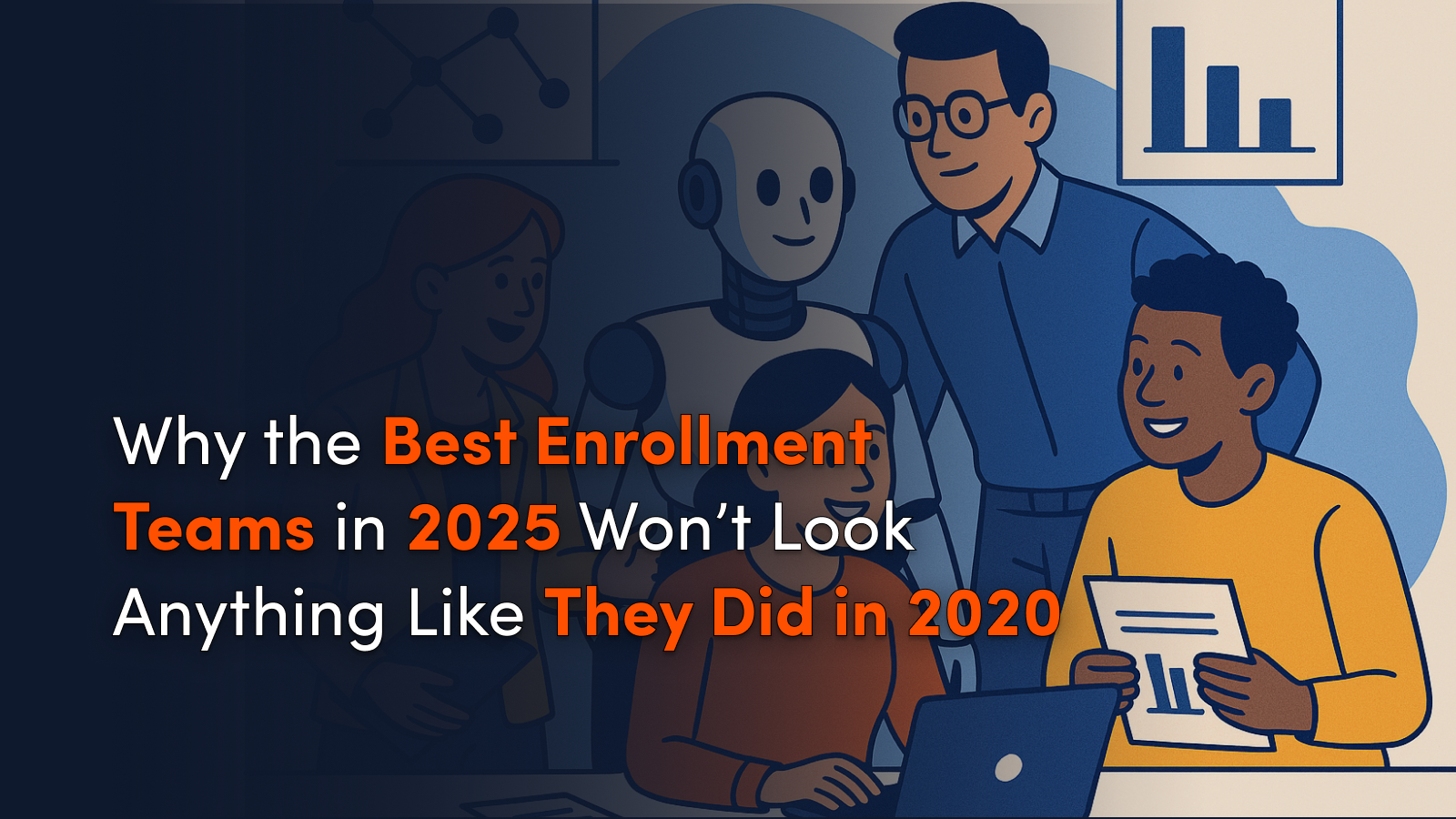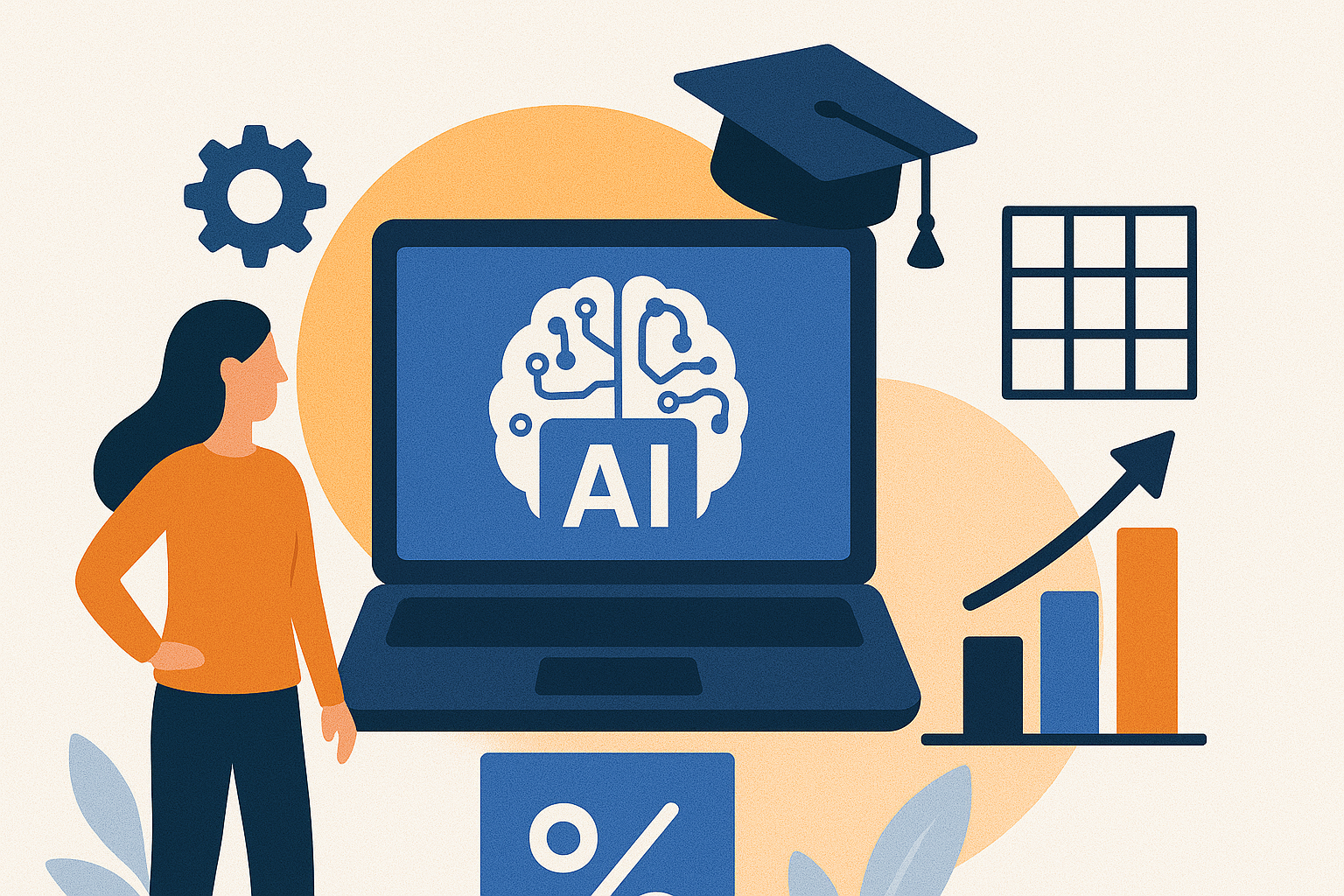About the Blog
Higher ed teams are no strangers to change. But the changes coming now aren’t just about new tools — they’re about entirely new team structures, roles, and ways of working. The rise of AI isn’t just accelerating workflows. It’s reshaping what departments look like, how they collaborate, and what skills matter.
So what happens when we stop thinking of AI as an assistant and start thinking of it as a teammate? We build different teams.
This isn’t a prediction for five years from now — it’s already happening.
The Shift Is Already Underway
Ask around and you’ll hear the same story: budgets are tighter, expectations are higher, and everyone’s being asked to do more with less. But something new is entering the conversation — teams that are finding unexpected capacity. Marketing departments that are producing more campaigns in half the time. Admissions teams that are spending less time triaging inquiries and more time building relationships.
What’s the difference? They’re structuring their teams around AI, not just with AI.
That means moving away from rigid org charts and toward nimble, cross-functional groups. It means hiring for strategic thinking and digital fluency, not just task execution. And it means rethinking what collaboration between marketing and admissions can look like.
Four Markers of the New Model
Here are four shifts we’re seeing from institutions as they build future-ready teams. Let’s call them The New Signals:
1. From Volume to Value
Instead of measuring output — how many emails, how many events, how many posts — modern teams are focused on what’s moving the needle. AI helps surface those signals faster, and the best teams are reorganizing around what drives results, not just what fills the calendar.
2. From Silos to Strategy Pods
Forget the handoffs between admissions and marketing. Leading teams are creating “pods” that bring together recruiters, content creators, data analysts, and campaign strategists, with AI tools powering insight-sharing and decision-making in real-time.
3. From Job Titles to Skill Sets
Traditional job titles are starting to blur. Instead of a clear line between “designer” and “writer” or “recruiter” and “marketer,” teams are prioritizing agility: Can you prompt AI to generate a first draft? Can you evaluate what’s working and adjust quickly? The skill mix matters more than the title.
4. From Reactive to Predictive
AI makes it easier to anticipate melt risk, engagement drop-off, or which programs need attention — but only if teams are built to listen. The most effective orgs aren’t waiting to react. They’re proactively designing workflows around early signals and student intent.
Higher ed teams that embrace this new model aren’t just adapting — they’re advancing. By centering AI as a collaborator rather than a convenience, institutions are unlocking new ways to work smarter, move faster, and stay student-centered. The future isn’t about replacing people — it’s about reimagining how people and AI work together to solve the right problems. The teams that lean into this shift now will be the ones leading the sector tomorrow.










